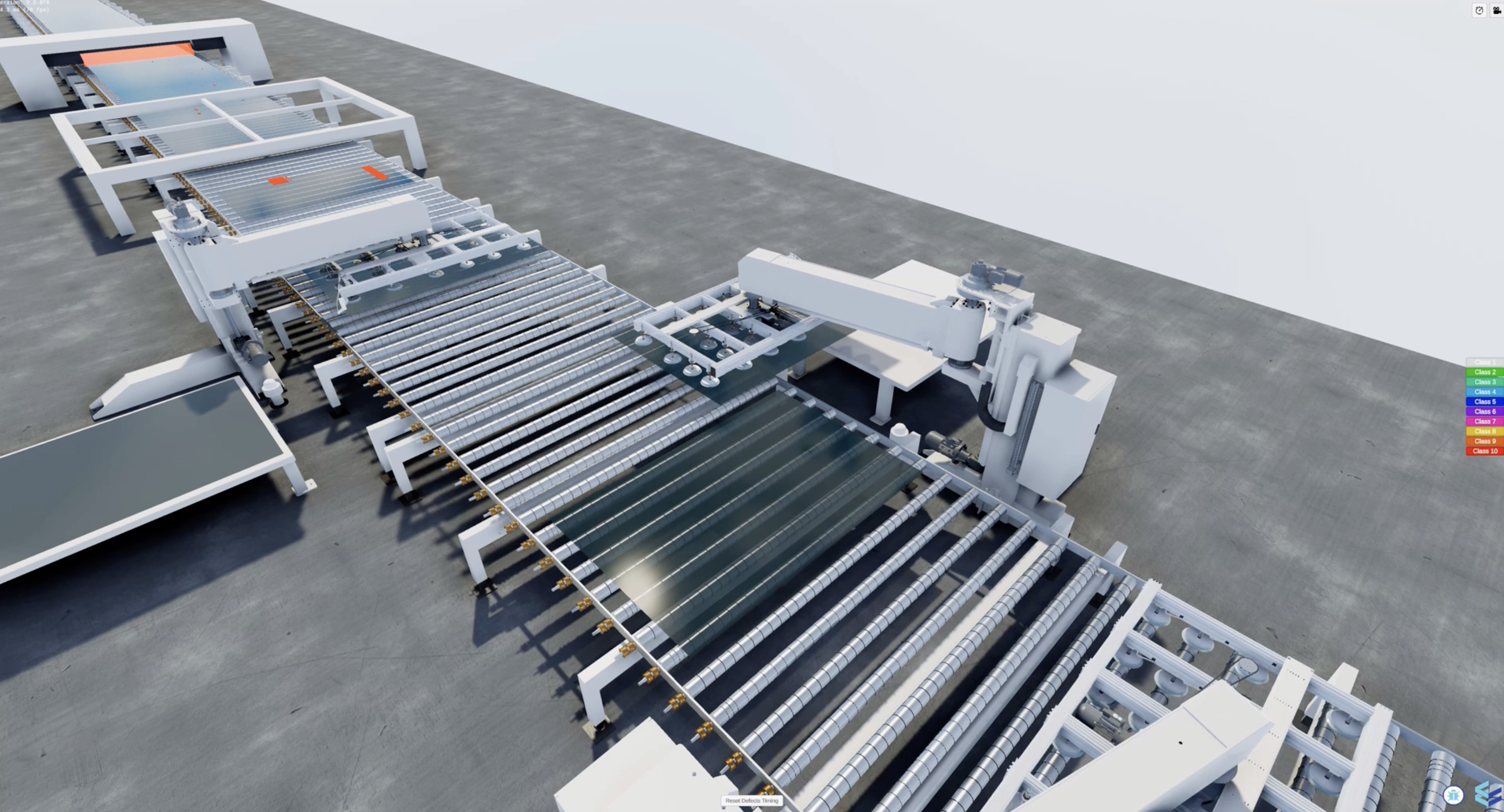how Vintecc enables automated glass production

About
Company
PrimetalsLocation
Competences
production excellence
industry 4.0
industrial IoT
HMI
Quality control
optimisation for glass production
1. The Big Picture
Precision is crucial in the glass industry. From production to final processing, every detail counts to guarantee an optimal end product. Primetals, a major player in this sector, active in heavy industrial processes, was looking for a way to optimise and improve their glass production process.
Within this production chain, in the so-called “cold end” section, quality control plays a key role. For architectural glass, inclusions and defects are unacceptable, while for other types (e.g. greenhouse glass), certain impurities are permissible. The challenge is therefore to cut the glass as optimally as possible, given the defects, the desired production batches, the routing of the glass through the factory and a minimum of loss. To this end, an optimisation system was sought that could make real-time decisions about the optimal cutting patterns, taking into account a complete set of preconditions. An additional challenge is the system's uptime. Without a calculated result, there is no choice but to destroy all production glass.
Vintecc was called in to develop an advanced software solution that could automate and optimise this complex task.
2. The challenges
The implementation of an advanced optimisation system presented several technical and operational challenges:
- Defect detection and optimisation: An automated system had to receive real-time defect notifications and adjust the calculated cutting patterns accordingly.
- Minimal processing time: Glass cutting is time-critical. The system had only a few seconds to make cutting decisions.
- Redundancy: Production runs 24/7, without interruption. The system had to include redundant safeguards to prevent production interruptions, including duplicated databases.
- Data integration and architecture: The server-based architecture had to communicate seamlessly with existing PLC systems and be redundant.
- User-friendly operator interface: Operators had to be able to set up, monitor and intervene where necessary. A clear overview of the optimised result was crucial.
Given these complex requirements, a traditional approach was insufficient. That is why Vintecc developed an innovative and data-driven solution.

3. The solution
Vintecc developed an advanced algorithm and accompanying software architecture that optimises the cutting process. The core components of the solution were:
- Defect detection: Using a camera system, defects in the glass were classified into different categories and passed on to the optimiser.
- Real-time optimisation: A powerful optimiser analysed the defect data and calculated the most efficient cutting patterns in just a few seconds. Various optimisation tasks run in parallel.
- Dynamic configuration: Operators could use an intuitive interface to configure which defects were acceptable and which had to be cut out, depending on the type of glass.
- System redundancy: To avoid downtime, a failsafe mechanism was built in so that the system could switch to a backup optimiser if a problem occurred.
- Seamless integration with existing infrastructure: The system communicated directly with the PLCs and cutting machines and synchronised the data with an SQL database for traceability.
- Data analysis and logging: All optimisation decisions were logged so that operators and engineers could perform analyses and make improvements later. Calculated results could be replayed.
This solution ensured that the production line could continue to run continuously with a minimal margin of error and maximum material utilisation.

4. The results
The implementation of Vintecc's solution yielded impressive results:
- Improved material utilisation: Thanks to advanced optimisation, cutting waste was significantly reduced.
- Higher production quality: Defects were accurately classified and cut out, resulting in a higher quality end product.
- More efficient workflow: Operators had to perform fewer manual checks and could intervene more quickly in the event of deviations.
- Less downtime: Thanks to the redundancy in the system, production could continue without interruption, even in the event of unexpected errors.
- Traceability and analysis: The logging of all production data enabled in-depth analyses, which helped with future process optimisations.

5. Conclusion
This case demonstrates how advanced technology and smart optimisation algorithms can have a significant impact on industrial production processes. By combining defect detection with real-time optimisation, Vintecc was able to offer a solution that not only increased production quality, but also improved the efficiency and reliability of the entire process.
The successful collaboration and implementation demonstrate that an innovative, data-driven approach is the key to modernisation in industry. With this technology, the customer is poised for further growth and optimisation in the future.

